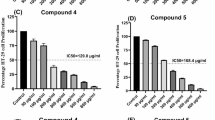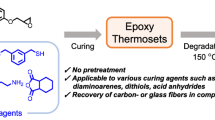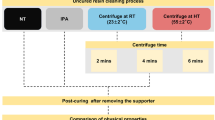Abstract
A trifunctional five-membered cyclic carbonate resin synthesized from resveratrol (Res-TC) was thermally cured with various diamines: trioxyethylene diamine (TODA), dioxyethylene diamine (DODA), m-xylene diamine (mXDA), pentamethylene diamine (PMDA), and Jeffamine ED-600. Thermogravimetric analysis (TGA) revealed that the cured Res-TC/TODA, Res-TC/DODA, Res-TC/mXDA, and Res-TC/PMDA were easily thermally decomposed, whereas the cured Res-TC/Jeffamine was relatively stable. Differential scanning calorimetry (DSC) indicated that the cured Res-TC/TODA and Res-TC/Jeffamine samples were rubbery, whereas the cured Res-TC/DODA, Res-TC/mXDA, and Res-TC/PMDA samples were glassy at room temperature. Tensile tests of the cured resin films revealed that Res-TC/TODA, Res-TC/DODA, and Res-TC/PMDA had high elastic moduli of approximately 1 GPa with moderate tensile strengths, whereas Res-TC/mXDA had low tensile strength, indicating that it was a brittle material. Cured Res-TC/Jeffamine was a very soft material with poor mechanical properties. An adhesion test of the metal substrates revealed that cured Res-TC/TODA adhered strongly to both aluminum and stainless steel. After treatment with enzymes such as lipase and protease, some cured resins exhibited greater water uptake than did those treated with pure water, indicating that the enzymes cleaved the network of the cured resins and gradually decomposed the materials.
This is a preview of subscription content, access via your institution
Access options
Subscribe to this journal
Receive 12 print issues and online access
$259.00 per year
only $21.58 per issue
Buy this article
- Purchase on SpringerLink
- Instant access to full article PDF
Prices may be subject to local taxes which are calculated during checkout








Similar content being viewed by others
References
Luo T, Ma Y, Cui X. Review on frontal polymerization behavior for thermosetting resins: materials, modeling and application. Polymers. 2024;16:185.
Liu J, Wang S, Peng Y, Zhu J, Zhao W. Advances in sustainable thermosetting resins: From renewable feedstock to high performance and recyclability. Prog Poly Sci. 2021;113:101353.
Liu J, Zhang L, Shun W, Dai J, Peng Y, Liu X. Recent development on bio-based thermosetting resins. J Polym Sci. 2021;59:1474–90.
Czub P, Sienkiewicz A. Synthesis of Bio-Based Epoxy Resins. In Bio-based epoxy polymers, blends, and composites: synthesis, properties, characterization, and applications, First Edition, Parameswaranpillai J, Rangappa S M, Siengchin S, Jose S, eds. 2021; 1-72.
Baroncini EA, Yadav SK, Palmese GR. Sanzione III JF. Recent advances in bio-based epoxy resins and bio-based epoxy curing agents. J Appl Sci. 2016;133:44103.
Kihara N, Hara N, Endo T. Catalytic Activity of Various Salts in the Reaction of 2,3-Epoxypropyl phenyl ether and carbon dioxide under atmospheric pressure. J Org Chem. 1993;58:6198–202.
Iwasaki T, Kihara N, Endo T. Reaction of various oxiranes and carbon dioxide. Synthesis and aminolysis of five-membered cyclic carbonates. Bull Chem Soc JPN. 2000;73:713–9.
Caló V, Nacci A, Monopoli A, Fanizzi A. Cyclic carbonate formation from carbon dioxide and oxiranes in tetrabutylammonium halides as solvent and catalysts. Org Lett. 2002;4:2561–3.
Aoyagi N, Furusho Y, Endo T. Remarkably efficient catalysts of amidine hydroiodides for the synthesis of cyclic carbonates from carbon dioxide and epoxides under mild conditions. Chem Lett. 2012;41:240–1.
Longwitz L, Steinbauer J, Spannenberg A, Werner T. Calcium-based catalytic system for the synthesis of bio-derived cyclic carbonates under mild conditions. ACS Catal. 2018;8:665–72.
Aoyagi N, Furusho Y, Endo T. Efficient catalysts of acyclic guanidinium iodide for the synthesis of cyclic carbonates from carbon dioxide and epoxides under mild conditions. Synthesis. 2020;52:150–8.
Maisonneuve L, Lamarzelle O, Rix E, Grau E. Caramail H. Isocyanate-Free Routes to Polyurethanes and Poly(hydroxy Urethane)s. Chem Rev. 2015;115:12407–39.
Kihara N, Endo T. Synthesis and Properties of Poly(hydroxyurethane)s. J Polym Sci Part A Polym Chem. 1993;31:2765–73.
Kim MR, Kim HS, Ha CS, Park DW, Lee JK. Synthesis and Thermal Properties of Poly(hydroxy)urethanes by Polyaddition Reaction of Bis(cyclic carbonate) and Diamines. J Appl Polym Sci. 2001;81:2735–43.
Leitsch EK, Beniah G, Liu K, Lan T, Heath WH, Scheidt KA, et al. Nonisocyanate thermoplastic polyhydroxyurethane elastomers via cyclic carbonate aminolysis: critical role of hydroxyl groups in controlling nanophase separation. ACS Macro Lett. 2016;5:424–9.
Chen Z, Hadjichristidis N, Feng X. Granou Y. Poly(urethane-carbonate)s from Carbon Dioxide. Macromolecules. 2017;50:2320–8.
Beniah G, Chen X, Uno BE, Liu K, Leitsch EK, Jeon J, et al. Combined Effect of Carbonate and Soft-Segment Molecular Structures on the Nanophase Separation and Properties of Segmented Polyhydroxyurethane. Macromolecules. 2017;50:3193–203.
Aoyagi N, Furusho Y, Endo T. Mild Incorporation of CO2 into Epoxides: Application to Nonisocyanate Synthesis of Poly(Hydroxyurethane) Containing Triazole Segment by Polyaddition of Novel Bifunctional Five-Membered Cyclic Carbonate and Diamines. J Polym Sci Part A Polym Chem. 2018;56:986–93.
Eltayeb M, Li SX, Okoye PU, Wang S. Carbodiimide-Assisted Synthesis of High Purity Bis(cyclic carbonate) Under Atmospheric Conditions for Preparation of Non-Isocyanate Polyurethane. J Polym Environ. 2021;29:1880–93.
Bähr M, Bitto A, Mülhaupt R. Cyclic limonene decarbonate as a new monomer for non-isocyanate oligo-and polyurethanes (NIPU) based terpenes. Green Chem. 2012;14:14471454.
Besse V, Auvergne R, Carrlotti S, Boutevin G, Otazaghine B, Caillol S, et al. Synthesis of isosorbide based polyurethanes: An isocyanate free method. React Funct Polym. 2013;73:588–94.
Schmidt S, Gatti FJ, Luits M, Ritter BS, Bruchmann B, Mülhaupt R. Erythritol Dicarbonate as Intermediate for Solvent and Isocyanate-Free Tailoring of Bio-Based Polyhydroxyurethane Thermoplastics and Thermoplastic Elastomers. Macromolecules. 2017;50:2296–303.
Chen Y, Chen B, Torkelson JM. Biobased, reprocessable non-isocyanate polythiourethane networks with thionourethane and disulfide cross-links: comparison with polyhydroxyurethane network analogues. Macromolecules. 2023;56:3687–702.
Suzuki A, Nagai D, Ochiai B, Endo T. Facile Synthesis and Crosslinking Reaction of Trifunctional Five-Membered Cyclic Carbonate and Dithiocarbonate. J Polym Sci Part A Polym Chem. 2004;42:5983–9.
Maeda S, Sudo A, Endo T. Synthesis and Thermally Behavior of Networked Poly(hydroxyurethane) by Ring-opening Polymerization of Amine and Five-membered Cyclic Carbonate Obtained by the Reaction of Epoxide and CO2. J Netw Polym. 2013;34:298–305.
Schimpf V, Heck B, Reiter G, Mülhaupt R. Triple-Shape memory materials via thermoresponsive behavior of nanocrystalline non-isocyanate polyhydroxyurethanes. Macromolecules. 2017;50:3598–606.
Chen X, Li L, Jin K, Torkelson JM. Reprocessable polyhydroxyurethane networks exhibiting full property recovery and concurrent associative and dissociative dynamic chemistry via transcarbamoylation and reversible cyclic carbonate aminolysis. Polym Chem. 2017;8:6349–55.
Chen X, Li L, Torkelson JM. Recyclable polymer networks containing hydroxyurethane dynamic cross-links: Tuning morphology, cross-link density, and associated properties with chain extenders. Polymer. 2019;178:121604.
Seychal G, Ocando C, Bonnaud L, Winter JD, Grignard B, Detrembleur C, et al. Emerging polyhydroxyurethanes as sustainable thermosets: a structure−property relationship. ACS Appl Polym Mater. 2023;5:5567–81.
Grau L, Soucek R, Pujol MD. Resveratrol derivatives: Synthesis and their biological activities. Eur J Med Chem. 2023;246:114962.
Feng C, Chen J, Ye W, Liao K, Wang Z, Song X, et al. Synthetic biology-driven microbial production of resveratrol: advances and perspectives. Front Bioeng Biotech. 2022;10:833920.
Reeve MS, McCarthy SP, Downey MJ, Gross RA. Polylactide stereochemistry: effect on enzymic degradability. Macromolecules. 1994;27:825–31.
Raczyńska A, Góra A, André I. An overview on polyurethane-degrading enzymes. Biotech Adv. 2024;77:108439.
Funding
This work was financially supported by the Japan Society for the Promotion of Science (JSPS) KAKENHI Grant Number 21K05189.
Author information
Authors and Affiliations
Corresponding author
Ethics declarations
Conflict of interest
The authors declare no competing interests.
Additional information
Publisher’s note Springer Nature remains neutral with regard to jurisdictional claims in published maps and institutional affiliations.
Supplementary information
Rights and permissions
Springer Nature or its licensor (e.g. a society or other partner) holds exclusive rights to this article under a publishing agreement with the author(s) or other rightsholder(s); author self-archiving of the accepted manuscript version of this article is solely governed by the terms of such publishing agreement and applicable law.
About this article
Cite this article
Matsumoto, K., Mitoma, T., Yamashita, I. et al. Curing of resveratrol-based trifunctional five-membered cyclic carbonate with various diamines and properties of the cured resins. Polym J (2025). https://doi.org/10.1038/s41428-025-01077-x
Received:
Revised:
Accepted:
Published:
DOI: https://doi.org/10.1038/s41428-025-01077-x



